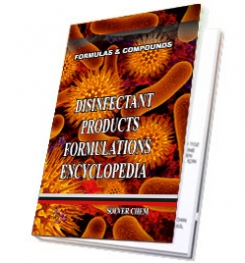70% percent of alcohol is ideal to a stronger solution. Pure alcohol coagulates protein in contact. Suppose the pure alcohol is poured over a single celled organism. The alcohol will go through the cell wall of the organism in all direction, coagulating the protein just inside the cell wall. The ring of the coagulated protein would then stop the alcohol from penetrating farther from the cell, and no more coagulation would take place. At this time the cell would become inactive but not dead.
Under the favorable conditions the cell would then begin to function. If 70 percent of alcohol is poured to a single celled organism, the diluted alcohol also coagulates the protein, but at a slower rate, so that it penetrates all the way through the cell before coagulation can block it. Then the entire cell is coagulated and the organism dies.
Instrument sterilization Prior to surgery, instruments should be rid of all forms of microorganisms to prevent postoperative wound infections. But this is sometimes difficult due to the grooves on instruments that can trap proteinrich material. According to APIC (Association for Professionals in Infection Control and Epidemiology), ethyl alcohol and isopropyl alcohol are not effective in sterilizing instruments because they lack sporicidal activity and can’t penetrate protein-rich materials. Isopropyl alcohol also lacks the ability to kill hydrophilic viruses.
For these reasons, alcohol is classified as an intermediate level disinfectant. Most investigators have access to autoclaves, gas sterilizers, hot beads, flames, chemicals or boiling water which can be used to properly sterilize the equipment. The Guide sets the standard for aseptic technique which includes sterilizing instruments and appropriately trained personnel. In the Council’s view, departure from Guide recommendations places an additional responsibility on the IACUC to provide appropriate scientific justification, performance data, and/or monitoring to support alternative practices.
ALCOHOL DISINFECTANTS
AND
PRODUCTION PROCESS
AND
PRODUCTION PROCESS
MANUFACTURING PROCESS OF ALCOHOL DISINFECTANTS is not very complicated. For the production, there is need usable and tried a formulation, raw materials and mixing tank. For raw materials to be used, quantities to be used and ingredients usage rankings, you should look into this formulation. Therefore, formulation and productıon methods of alcohol disinfectant solutions are important. If you have not a good formulation, you cannot make healthy and efficient production of any disinfectant products and derivatives.
DISINFECTANT PRODUCTS FORMULATIONS ENCYCLOPEDIA


HARD BOOK E BOOK
RELATED TAGS: HOW TO USE ALCOHOL DISINFECTANTS, DISINFECTANT PRODUCTION, DISINFECTANT MANUFACTURING PROCESS,ALCOHOL DISINFECTANT MAKING, HOW TO MAKE ALCOHOL DISINFECTANTS,PROPERTIES OF ALCOHOL DISINFACTANT, MAKE DISINFECTANT,HOSPITAL APPLICATIONS, HOSPITAL EQUIPMENTS DISINFECTANT,SURGICAL INSTRUMENTS DISINFECTANTS, ALCOHOL HAND GEL DISINFECTANTS, ALCOHOL HAND DISINFECTANT PRODUCTION,ALCOHOL BASED HAND SANITIZER GEL FORMULA,FORMULAS,ALCOHOL BASED HAND SANITIZER GEL MAKING,ALCOHOL BASED SURGICAL DISINFECTANT PRODUCTION,FORMULATION OF SURGICAL INSTRUMENTS,DENTAL INSTRUMENTS DISINFECTANT FORMULA,FORMULAS.
SOLVERCHEM PUBLICATIONS
|
|
|
|
|
|
|
|
|
